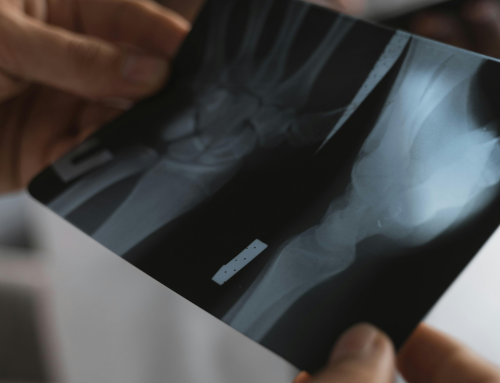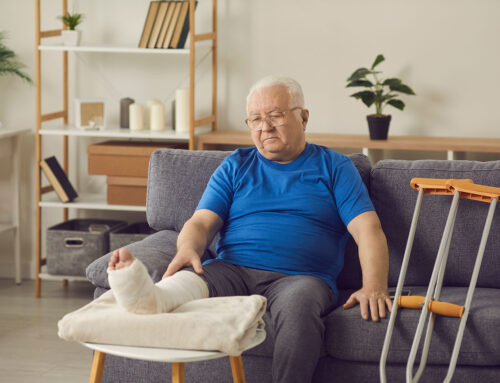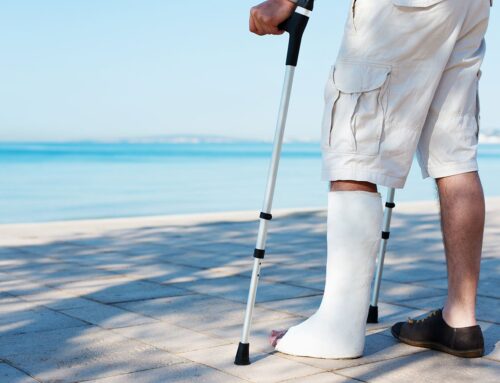The human body is simply fascinating. Think of it like an orchestra. Each muscle, bone, and blood vessel plays a part that allows the symphony of your body to run smoothly. However, things can be thrown off when just one piece is missing. One flute in a group of flutes may not cause Beethoven’s tune to be completely off – but missing enough of them, things won’t sound the same. When your body isn’t getting what it needs, it won’t be able to support you in the way you need. One blocked blood vessel may not seem like much. But without enough blood supply to your bone, you’re at risk for avascular necrosis, also known as osteonecrosis. If left untreated, your affected bone can collapse, or you’ll develop severe arthritis.
Read on to learn more about avascular necrosis, its symptoms, what causes it, and its risk factors.

What is Avascular Necrosis (Osteonecrosis)
Avascular necrosis has several names. It’s also called:
- Osteonecrosis
- Aseptic Necrosis
- Bone Infarction
- Ischemic Bone Necrosis
Try saying that 10 times fast. While the name may be a mouthful, it refers to the blood flow supply being temporarily or permanently cut off from your bones. It can affect several bones at once or be isolated to one bone. Blood flow and circulation are crucial parts of your bone’s rebuilding process. As old bone breaks down and new bone rebuilds, blood will deliver the essential nutrients and oxygen needed to regenerate new bone. If this process doesn’t happen fast enough, you can develop osteoporosis. If the blood supply is completely cut off, that’s when the bone can begin to crumble and even collapse due to avascular necrosis.
You’re not going to wake up one day and be overwhelmed with pain or discomfort from the disease. In its early stages, there are no symptoms at all. As it worsens, you may gradually notice more warning signs that should be discussed with a healthcare professional.
Symptoms of Avascular Necrosis (Osteonecrosis)
Osteonecrosis worsens over time, and symptoms will begin to become more prevalent. You’ll want to monitor and look out for the following:
- Pain that doesn’t improve, even with rest or pain relievers.
- Mobility restrictions due to pain.
- Limping that isn’t caused by a recent injury.
- Pain is when you put pressure on a bone, and the pain decreases once you remove the pressure.
- Stiff joints.
If you’ve developed any of these symptoms, it’s important that you speak with your doctor so they can determine if further testing is required.
Causes of Avascular Necrosis (Osteonecrosis)
As you’ve learned, avascular necrosis happens when there is an interruption or reduced blood flow to the bone. There isn’t just one cause for this - you can experience it from:
- Certain diseases or medical conditions that lessen the blood supply, such as sickle cell anaemia. It can also develop after receiving radiation treatment that weakens the bone and blood vessels.
- Fatty deposits in the blood vessels due to a heavy-carb diet or excessive drinking.
- Trauma to the joint or bone that is typically caused by a fracture or dislocation.
Risk factors of Avascular Necrosis (Osteonecrosis)
This condition can be both genetic and lifestyle based. Certain factors can put you at a higher risk of developing osteonecrosis. Some of these include:
- Steroid use: Experts believe the increase in lipid levels in the blood can lead to reduced blood flow if you’re using a high-dose corticosteroid, such as prednisone.
- Medical treatments: Radiation can be beneficial for cancer patients, but it can also weaken the bone. Other treatments, such as organ transplants, can also be factors with avascular necrosis.
- Excessive alcohol consumption: Having a few drinks a day for several years can wreak havoc on your health. There is a long list of risks involved, including osteonecrosis. This is because, over time, fatty deposits will form in your blood vessels.
- Certain medical conditions: Some conditions put you at a higher risk of developing avascular necrosis. A few to consider are osteoporosis, lupus, diabetes, pancreatitis, HIV/AIDS, leukaemia, decompression sickness, and sickle cell anaemia.
Treatment for Avascular Necrosis (Osteonecrosis)
Your doctor will determine the best course of action based on the following:
- Your age and health history.
- The cause of the disease.
- Your preference for your treatment options.
- Your tolerance for certain medications or procedures.
- The location and how much bone has already been affected.
While there is no cure for osteonecrosis, you can halt it from causing further damage to your bone or joint. Some treatment options your doctor may recommend are:
- Medicine to reduce pain.
- Assistive devices that will reduce the weight on the affected joint or bone.
- Core decompression is a surgical procedure that removes the inner layer of bone to increase blood flow.
- Joint replacement.
- A bone graft.
If you’re at risk for blood flow reduction, it’s essential that you adjust your lifestyle to support your health. This may mean reducing drinking and smoking or introducing exercises that promote better circulation. If you’ve experienced a fracture, low-intensity pulsed ultrasound devices can help you heal faster, and you only need to use it for 20 minutes a day. This technology activates cell reproduction, protein expression, and enhances cellular behaviour at the fracture site. Contact us if you’re suffering from a break or to find out if this can help your condition.
Are you at risk for developing osteonecrosis? What surprised you the most in this article? Share your thoughts with our readers in the comments below.





